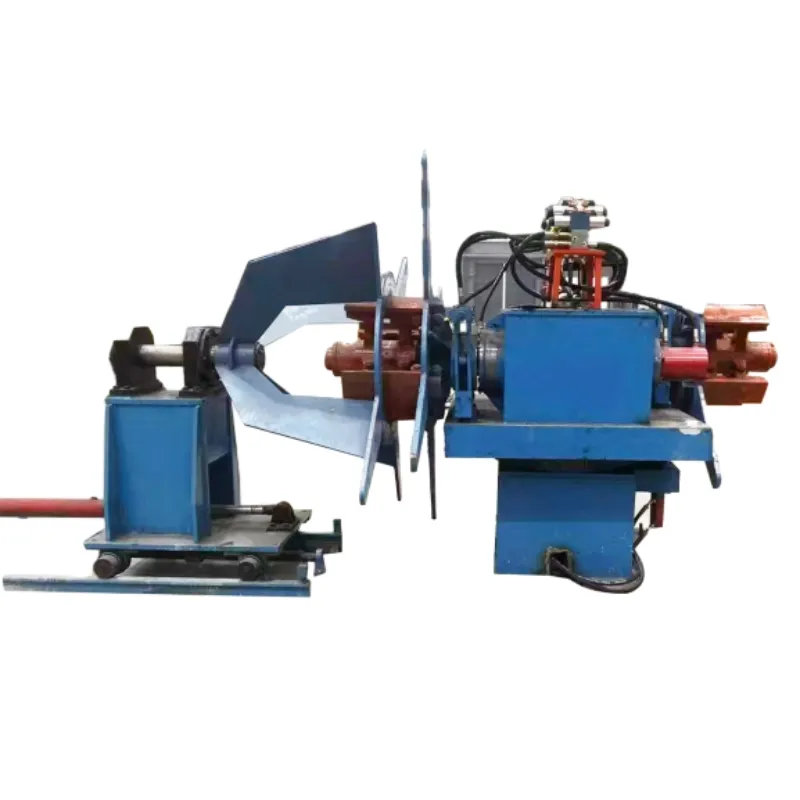Innovative Solutions for Manufacturing Rolling Shutter Systems Efficiently and Effectively
Understanding Rolling Shutter Making Machines
In the realm of modern manufacturing, the production of rolling shutters has gained substantial significance due to their durability, security features, and aesthetic appeal. A critical aspect of this production process is the use of specialized machinery known as rolling shutter making machines. These machines are designed to streamline the fabrication of rolling shutters, enhancing efficiency while maintaining high quality.
Rolling shutters are widely used in commercial and residential buildings for various purposes, including security against theft, privacy, and the control of light and air. As the demand for robust yet flexible solutions in architecture increases, manufacturers must be equipped with advanced technologies to meet these needs. This is where rolling shutter making machines come into play.
Components and Functionality of Rolling Shutter Making Machines
Rolling shutter making machines typically consist of several key components that work in harmony to produce high-quality shutter slats. The primary components include
1. Forming Stations These stations are responsible for shaping the raw material, usually steel or aluminum, into the desired profile for the slats. The forming process is carried out through a series of rollers that progressively shape the material, ensuring consistency and precision throughout the production line.
2. Cutting Mechanism Once the material has been formed into slats, it must be cut to the appropriate lengths. The cutting mechanism is usually automated, allowing for quick adjustments and minimizing waste. This enhances the efficiency of the production process, ensuring that the final product matches the specifications required by customers.
3. Punching and Slotting Units Many rolling shutters require additional features such as holes or slots for mounting and fastening. Punching and slotting units integrate seamlessly into the machine, allowing for quick and precise modifications without needing separate equipment.
rolling shutter making machine

4. Coiling Units After slats are formed and cut, they are often coiled for easier transport and storage. Coiling units ensure that the finished product is neatly rolled, ready for distribution to end-users.
5. Control Systems Modern rolling shutter making machines are equipped with sophisticated control systems that utilize PLC (Programmable Logic Controllers). These systems enhance automation, allowing operators to program and monitor the entire production process with ease. This not only reduces labor costs but also minimizes human error.
Benefits of Using Rolling Shutter Making Machines
Investing in rolling shutter making machines brings numerous advantages to manufacturers. Firstly, the speed of production increases significantly, allowing businesses to meet growing demand without compromising quality. Secondly, the precision offered by these machines ensures that each component is made to exact specifications, reducing the need for reworking and waste.
Additionally, the automation capabilities of these machines lead to lower labor requirements, ultimately lowering operational costs. Lastly, manufacturers can cater to a diverse range of customer preferences by easily adjusting the production parameters, enabling them to offer customized solutions in terms of design, size, and material.
Conclusion
The advancement of rolling shutter making machines represents a significant leap forward in the manufacturing sector. As the need for efficient, secure, and visually appealing solutions in architecture continues to rise, these machines will play a pivotal role in meeting those demands. By understanding the components and benefits of rolling shutter making machines, manufacturers can optimize their production processes and deliver high-quality products that satisfy the needs of their customers. In a competitive market, staying ahead with modern technology is not just an option; it is essential for sustained growth and success.
-
High Frequency Straight Seam Welded Pipe Production Line-BzZhou Xinghua Machinery Equipment Manufacturing Co., LTD.|line pipe steel&welded gas pipeNewsJul.30,2025
-
High Frequency Straight Seam Welded Pipe Production Line-BzZhou Xinghua Machinery Equipment Manufacturing Co., LTD.|High Precision&Automated SolutionsNewsJul.30,2025
-
High Frequency Straight Seam Welded Pipe Production Line - BzZhou Xinghua Machinery Equipment Manufacturing Co., Ltd.NewsJul.30,2025
-
High Frequency Straight Seam Welded Pipe Production Line-BzZhou Xinghua Machinery Equipment Manufacturing Co., LTD.|Precision Welding, High EfficiencyNewsJul.30,2025
-
High Frequency Straight Seam Welded Pipe Production Line|BzZhou Xinghua|Precision Welding&EfficiencyNewsJul.30,2025
-
High Frequency Straight Seam Welded Pipe Production Line - BzZhou Xinghua|Precision Engineering&EfficiencyNewsJul.30,2025


